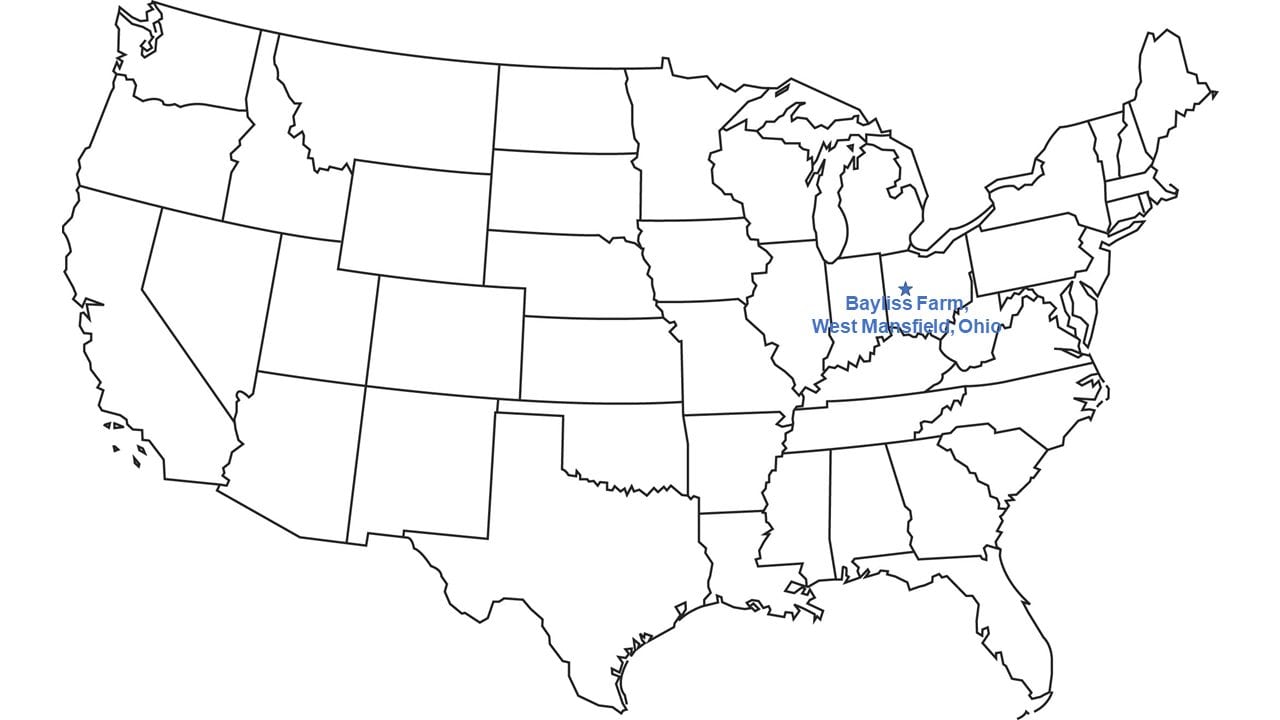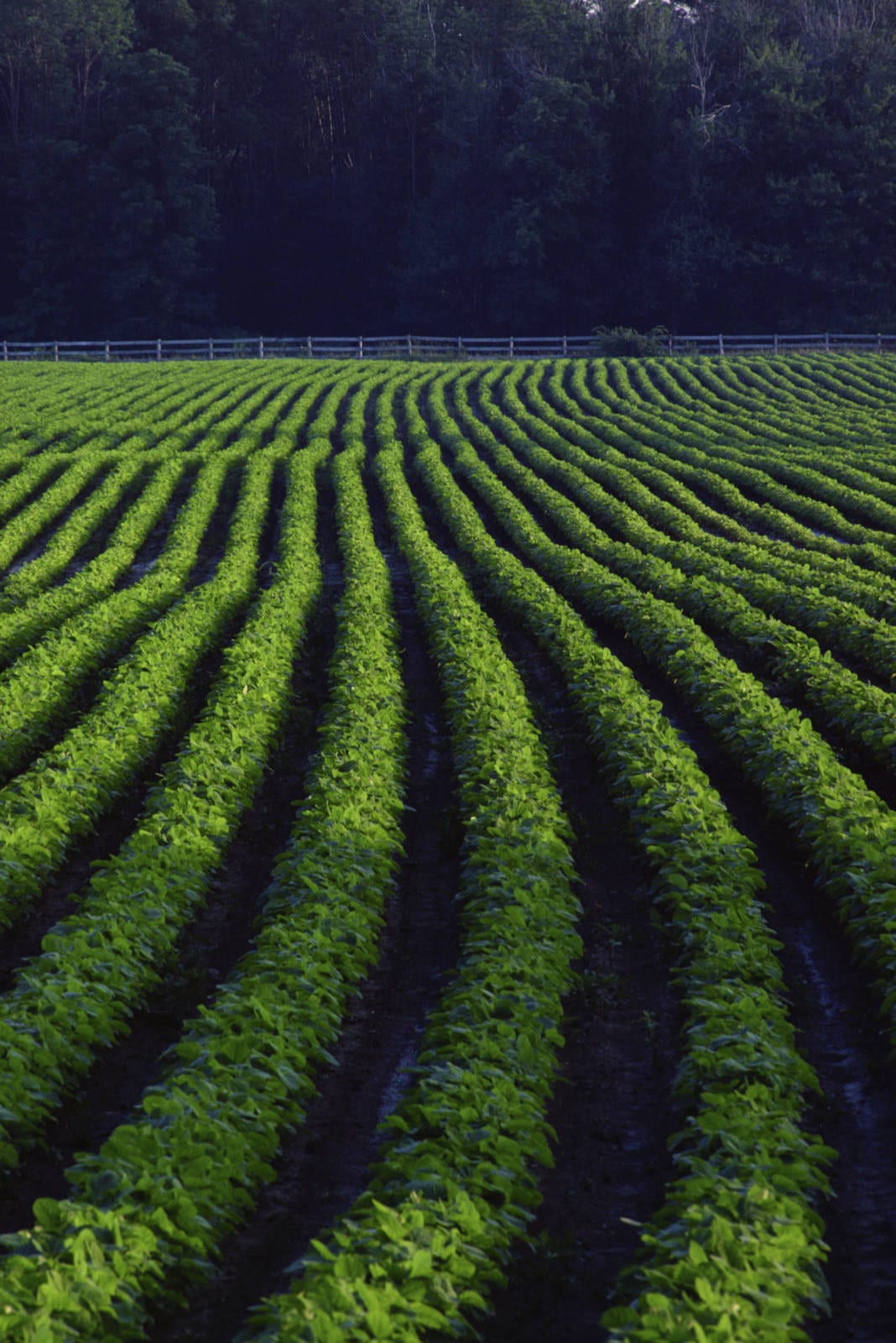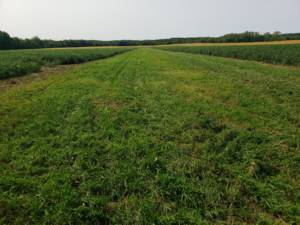 In our area of the eastern U.S. Midwest, we were very dry all summer. But in early September, we got about 3 months of rain in 48 hours. We received between 10 to 15 cm, or 4 to 6 inches, of rain. Because we planted late this year due to spring weather, this rain should improve all our crop yields a bit.
In our area of the eastern U.S. Midwest, we were very dry all summer. But in early September, we got about 3 months of rain in 48 hours. We received between 10 to 15 cm, or 4 to 6 inches, of rain. Because we planted late this year due to spring weather, this rain should improve all our crop yields a bit.
Now we don’t need any more rain until after harvest. But it’s unlikely that the weather will cooperate like that.
Our soybeans are still green. Although the pods are set, this rain should help fill bigger beans inside those pods. The soybeans planted at the beginning of May are just starting to turn yellow, so they have less potential to improve yield at this point, but the soybeans planted in June should benefit the most.
My rule of thumb, based on years of experience, is that soybeans will be ready to harvest about 30 days after a yellow tinge appears in the field. That started happening in our early planted soybeans on Sept. 7, so we will likely be able to start cutting soybeans the first full week of October, weather permitting. And the later planted soybeans will likely be ready to harvest around Oct. 20. I am expecting good soybean yields
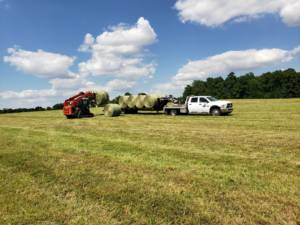 Much of our corn was planted late, and it emerged unevenly. That means it is maturing unevenly, as well. The corn that is behind will benefit more from the recent rains, but it will likely just improve yields from poor to decent. I don’t expect to be able to harvest corn until the beginning of November because it wasn’t planted until June. We hope that we don’t get an early frost this fall.
Much of our corn was planted late, and it emerged unevenly. That means it is maturing unevenly, as well. The corn that is behind will benefit more from the recent rains, but it will likely just improve yields from poor to decent. I don’t expect to be able to harvest corn until the beginning of November because it wasn’t planted until June. We hope that we don’t get an early frost this fall.
However, our third cutting of hay was the best of the season, thanks to the big rain. It probably doubled our yield and improved the quality when we cut it in mid-September. The beef cattle my son-in-law raises will have plenty to eat this winter, with extra to sell.
The weather has interfered with other plans, including cover crops. We had hoped to seed cover crops into the stubble of our wheat fields the first week of September, but the 48-hour storm made it too wet for that. We should be able to seed those fields as soon as they dry out enough.
We have planned to plant cover crops in as much as two-thirds of our soybean fields. However, late planting forces a late harvest. We sow cover crops after fields are harvested, so we likely won’t have time to plant that many fields this fall. The cover crop needs to have enough time to get established before winter to provide the benefits we want. Hopefully we will be able to get cover crops on at least one-third of our soybean fields.
We had also planned to plant a bit of winter wheat following soybeans, but again, the late harvest may prevent that from happening. It’s a field where we also intend to do some drainage tile work in between soybean harvest and winter wheat planting, and there may not be enough time to do all of that.
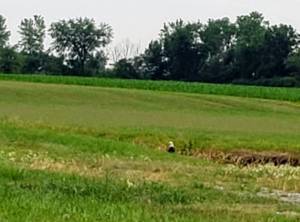
As we wait for that rain to turn into grain, we are finishing the delivery of our 2019 crops and cleaning out our storage bins. We finished delivering soybeans about a month ago. Those soybeans go to one of two places. Some go to a rail terminal about 32 km, or 20 miles, away. From there, they are shipped to the U.S. East Coast for feed or export. The rest of our feed soybeans are crushed at a plant about 60 km, or 32 miles, away.
We have a bit more corn to deliver to clean out those storage bins. We sell our corn to a layer chicken farm just 1.6 km, or 1 mile, from our main farm. The farm has its own feed mill and thousands of laying hens. They efficiently process our corn into eggs. And, we use chicken litter from this farm as fertilizer in many of our fields. It works very well for us.
Based on what I observed during the ProFarmer Crop Tour last month, the U.S. soybean crop from Ohio to Minnesota looked good, and it was fairly consistent through that segment of the U.S. Midwest. The corn also looked pretty good. In fact, late-planted corn in my area or northwest Ohio was probably the poorest corn I saw until I got to Iowa, where some areas have severe wind damage.
The next step will be to harvest our own crops and find out what we really have. And to watch the markets to determine when to sell our 2020 crops.
